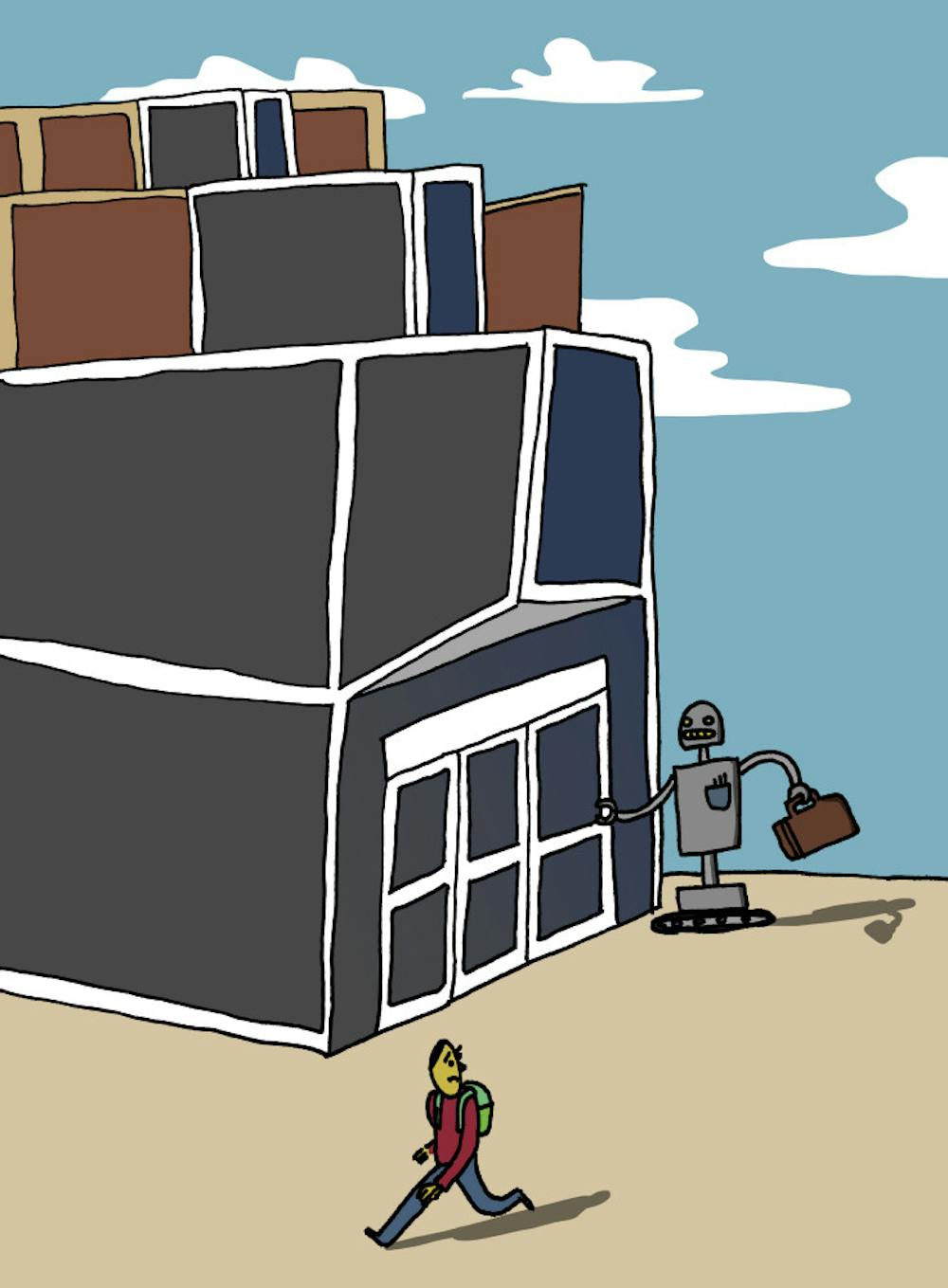At a time when cybersecurity, machine learning and artificial intelligence deeply influence the economy and public debate, more students are flocking to the University’s Department of Computer Science. After half a decade of steady increases in enrollment, the department is taking new steps to respond to student interest. The CS department will hire 15 new faculty members in the next five years, a 50 percent expansion that constitutes the largest single wave of faculty hiring in its 40-year history, said Ugur Cetintemel, professor of computer science and chair of the department. In hopes of increasing the diversity and scope of research and teaching in the department, 10 of the new hires will be tenure-track professors, and the other five will be lecturers, he added.
The number of CS concentrators has more than tripled in the last six years, and while faculty hiring has been continuous, it has not kept up with growth in the number of interested students. When Cetintemel began working at the University in 2001, “a class size of 30 to 40 would be considered pretty decent.” Now, classes with 200 students are not unusual, with some reaching 300 or more in enrollment. Some of these courses are introductory level lectures, where high enrollment is typical, but Cetintemel said that this trend appears across all course levels. “There’s a lot of catch-up work to be done,” he said. “One in six students at Brown is concentrating in computer science at this point.”
[infogram id="e857e30d-42e6-4161-b183-3555ab988a5e" prefix="v7M" format="interactive" title="Line Chart"]
Kathi Fisler, a professor in the department, elaborated on some of the challenges posed by larger classes. For one, it can be harder to get students to come in and ask for help, she said. “They assume you don’t have the time for them,” even when this isn’t the case. Class size can also impose a communication burden. “Where you notice it is in the volume of email you have to handle,” she said.
The expansion is also meant to make advising responsibilities more manageable for faculty. Cetintemel noted that the average faculty member in the department is responsible for about 30 advisees.
The department’s growth responds to the increasingly multidisciplinary nature of computer science as well as the rise of newly emerging research fields. Tom Doeppner, a professor and vice chair who has been in the department since its inception, said there are not only “larger courses than we used to have, there’s more things we’d like to teach.”
Cetintemel cited cybersecurity, robotics and human-computer interaction as areas which have transformed from niche fields to mainstream domains of the discipline in recent years. “One goal for this growth is to strengthen ourselves in such areas,” he said.
Michael Littman, a professor and associate department chair of computer science, wrote in an email to The Herald that he has worked to accommodate great student interest in his research area, machine learning. However, he noted that “doing so has absorbed all my available time for research and keeping up with the rapidly evolving literature.” He added that the new hires should help keep the department “fresh and nimble in terms of staying on top of the latest work and its implications.”
The multidisciplinary potential of the department received special attention in the planning for the expansion. Other departments within the University often look to computer science for crossover and collaborative projects, Cetintemel said. As it currently stands, “We can accommodate only a fraction of those (requests),” he added. In hopes of encouraging more interdisciplinary research and teaching, three of the tenure-track faculty members will have considerable crossover with other departments.
The expansion will also allow the department to put more emphasis on custom courses for non-concentrators. Fisler described plans for a three-course track for students who are interested in computer science but not necessarily planning to concentrate in it, adding that many students are interested in “small doses” of CS education relevant to their own discipline. “I would like us … to be a department where people can see the breadth of intellectual activities that touch on computing reflected in the department,” she said.
But hiring new professors is unlikely to be the only change coming to the department, Cetintemel said. “If you have 50 percent new faculty, you need more space and more staff to support these faculty members,” he said.
If the department continues to expand, the oft-renovated Center for Information Technology will not be able to serve its needs for much longer, Doeppner pointed out. “We are running out of space,” he said, adding that units like computational biology are moving out, which can be detrimental to interdisciplinary work. “It’s always been really important to us to have everybody close to one another.”
The CS department is ready to accept a larger place in the future of the University. “We are trying to align ourselves so that we are building research programs that can … make a positive social impact,” Cetintemel said.
Fisler said that although CS has seen previous surges in enrollment that have then declined, this recent growth is different and merits the investment in new faculty. She described predictions made in the early 2000s, when some saw that computing was becoming “intellectual infrastructure” for other disciplines. While this wasn’t true during those years, “Now it’s getting there,” she said. “What the demand for research and education in computing looks like may shift,” she said, “but the volume will probably be there for a long time to come.”





